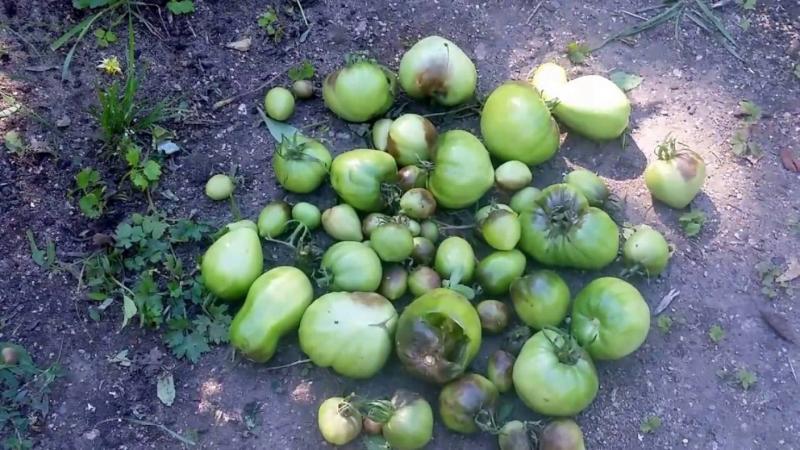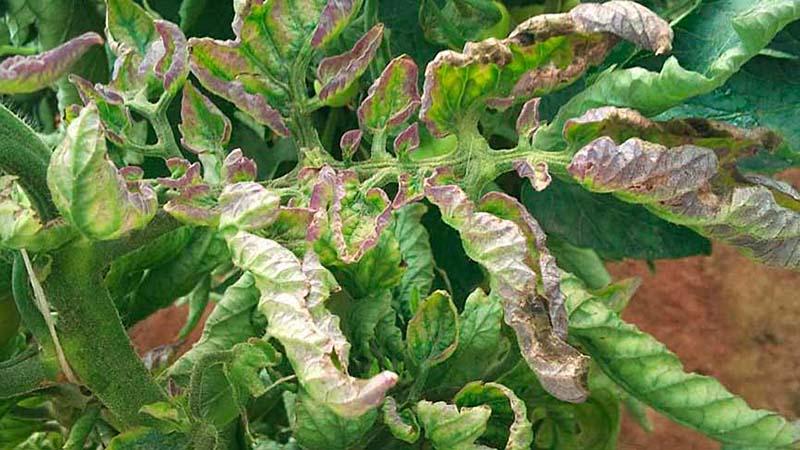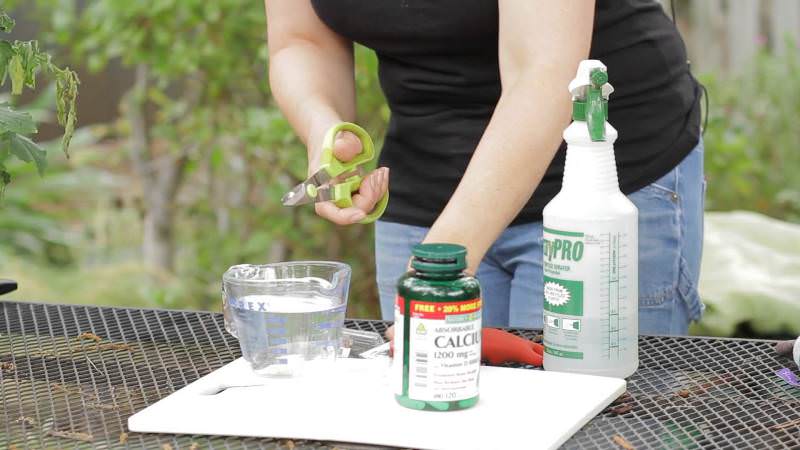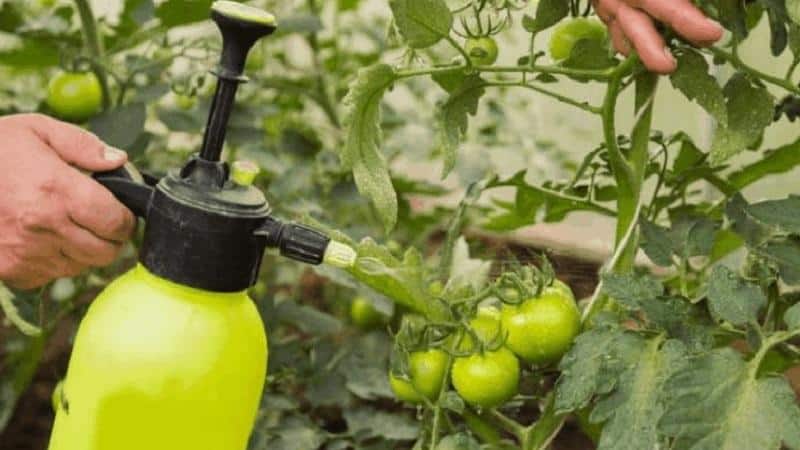How to deal with late blight on tomatoes: best methods and practical tips
Late blight is the worst enemy of tomatoes. So far, no varieties have been created that are 100% immune to this disease. Any tomato can become infected with late blight, even one grown according to all the rules. Gardeners from all over the world share tips with each other to combat this disease, and agronomists are developing special medicines.
In this article we will look at what late blight on tomatoes is and how to deal with it.
What kind of disease is this
Late blight (late blight) is a common fungal plant disease. It can affect not only tomatoes, but also other vegetables - for example, potatoes or cucumbers. Fungal spores penetrate the stem and infect the entire plant.
This happens especially easily in open ground with high humidity - water and warm air “help” stimulate the proliferation of fungal colonies.

How does it affect tomatoes?
The fungus begins to “eat” the plant - after all, like any living organism, it needs to eat something. Late blight takes away nutrients from tomatoes, and the vegetable dries out. Fungal spores are surprisingly tenacious - they do not die in water, and it is almost impossible to save an infected bush.
As a result, such plants will no longer be able to please summer residents with a rich and healthy harvest.
Important! Even if you managed to partially “save” the bush, you still won’t get a full harvest. Also, you cannot take seeds of such plants - late blight is cyclical, it will appear again on grown bushes.
Symptoms and external signs
Signs that indicate the formation of the disease:
- spots of gray-brown or brown color of various shapes on the leaves;
- white, slightly fluffy coating on the bush;
- death of inflorescences and peduncles;
- deformation of tomatoes - vegetables begin to take on an uneven and unattractive shape;
- rotting tomatoes;
- formation of a sharp and unpleasant odor.

Causes of appearance and infection
As a rule, the fungus “comes” to tomatoes from potato bushes. This happens especially often if the beds are located nearby. In addition, prolonged fogs and high humidity can cause the onset and development of the disease. Tomatoes grown in regions with changeable climatic conditions are especially susceptible to the disease.
Another reason is the use of already contaminated seeds. For example, you borrowed seeds for planting from a neighbor in the garden or bought them at the market. The result is infected tomato bushes.
It has also been proven that fungal spores can be stored in the soil. Therefore, before planting, you must be sure that the plot of land you have chosen is “healthy” and does not have any unpleasant surprises in store for you. To prevent infection, disinfect the soil and fertilize the soil before planting. This is done using ordinary ash or potassium permanganate.
Pathogens
As mentioned above, the causative agent is a fungal infection. Its name translates as “destroying the plant.” The fungal spore enters the plant through the stomata, a thin section of the epidermis near the plant leaf. Once hit, the plant is doomed—late blight cannot be avoided.
Terms of distribution
The disease spreads quickly in conditions of high humidity - for example, during long heavy rains.Sudden changes in temperature also favor infection. For example, it is hot during the day and cold at night. Dew appears, and this is another “helper” of late blight. A humid environment is an ideal basis for infection.

How and with what to treat
Both traditional methods and professional medications will help you get rid of the disease. Let's look at the most popular methods.
Chemicals
If the disease has already begun, it is best to resort to the help of chemical drugs - they are considered the most effective and fastest-acting. As a rule, several medications are used at once, this increases the likelihood of getting rid of the fungus as soon as possible.
The most effective means are considered:
- «Fundazol"is one of the most common medicines. It is a white powder with a slightly noticeable pungent odor. "Fundazol" is a potent toxic substance, use it with caution. Be sure to wear gloves and a respirator before use. After work, wash your hands and face thoroughly. The drug is an effective “fighter” against late blight; In addition to tomatoes, it can be used for lesions of berries and other fruits.
- «Quadris". Excellent for treating bushes when they are only at the initial stage of the disease. Suitable for both open ground and greenhouses. “Quadris” has a preventive and therapeutic effect on the plant. You can purchase the drug either in powder or spray form, which makes processing the bushes much easier. "Quadris" is capable of destroying even developing fungal spores. It does not pose a danger to either the plant or humans - vegetables can be consumed within 5 days after treatment.
- «Infinito". The medicine begins to act immediately after contact with the leaves.In addition to protecting against late blight, Infinito performs another important function - it accelerates the growth of tomatoes and improves the quality of the crop. You can purchase the product at any store that sells gardening supplies.
- «Consento". This drug is non-toxic, which means it does not pose any risks to the person himself. Has a strong antifungal and preventive effect. Acts directly on fungal spores, slows down the spread of the fungus. "Consento" is characterized by excellent resistance to different weather conditions. In addition to tomatoes, cucumbers, potatoes, and onions are also treated with this medicine.
- «Bravo". It is highly effective and has excellent antifungal properties. It is best to use Bravo as a preventive measure - before infection begins. The drug is compatible with other antifungal drugs, which increases the level of protection against spores. Treatment must be carried out in the morning or evening.
- «Trichopolum". This drug is sold in any pharmacy - it is absolutely safe for the plant. Has a strong antimicrobial effect. It contains a special element - metronidazole, which copes well with fungus.

Traditional methods
Both for the treatment of human diseases and for plants, traditional medicine has “stored up” several useful and effective recipes:
- Iodine. A solution based on this medication has strong antimicrobial properties. To prepare, add 20 drops of iodine to a bucket of water. Spray the tomato bushes with the solution. This recipe is best used before infection occurs.
- Salt. By analogy with preparing a solution with iodine, you can prepare a salt solution: a glass of salt per bucket of water.This combination creates a thin but dense film on the bushes. It is this that prevents fungal spores from penetrating inside. Spraying is best done at the stage when the tomatoes are still green.
- Fermented milk solutions. Surprisingly, lactic bacteria are the enemies of late blight. Kefir or whey are ideal - mix them with water and spray the stems and leaves. Lactic bacteria stop the development of spores and prevent late blight. In addition, dairy products do not have a harmful chemical effect on tomatoes.
- A mixture of tobacco and ash. It’s not difficult to prepare - just mix tobacco dust from cigarettes and one bucket of ash. “Powder” the bushes with this product - it will completely kill the fungus.
- Garlic and potassium permanganate. Prepare an infusion of finely chopped garlic, 10 liters of water and 1 g of potassium permanganate. The resulting liquid should be left to steep for 24 hours, and then the beds should be sprayed with it. This should be done every 15 days, and your tomatoes will remain untouched by the disease.
Agrotechnical techniques
To prevent vegetables from suffering from late blight, follow several agrotechnical rules:
- Restoring the natural balance of the soil. Remember that there should not be a lot of lime in the soil. Otherwise, late blight will develop there at the speed of light. To avoid this, apply peat and pour coarse sand into the furrows.
- Water the beds in a timely manner, do not forget about the required amount of water. Late blight develops well in a humid environment, so do not allow excess moisture. Water the tomatoes in the morning so that by evening some of the water has time to be absorbed into the soil.
- If you grow vegetables in a greenhouse, be sure to ventilate it.
- In case of sudden temperature changes, cover the beds with a special device - spunbond. In other words, it is an agrofibre that protects plants from the cold. This is especially true for central Russia and the northern regions of the country. In addition to protection, spunbond increases productivity and prevents the spread of diseases.
- Take care of the general condition of your tomatoes. Make sure that the crop receives enough nutrients. Don't forget about organic and mineral supplements. Nitrogen-containing preparations are especially good at strengthening the immune system.
- Choose high-quality and proven material from a well-known manufacturer. Pay attention to hybrid varieties — many of them have strong immunity to late blight.

Preventive measures
Before planting a tomato, we advise you to take a number of preventive measures. Among them:
- soil and air treatment. This is especially true for greenhouse plants. A Zircon solution is suitable for processing - wipe all hard surfaces with it - walls, frames in the greenhouse, pegs. In addition, it is also necessary to cultivate the soil;
- water the bushes correctly - direct the stream of water to the base of the bush, avoiding moisture getting on the leaves;
- use green manures - “green fertilizers”. These are special plants whose main function is to enrich the soil with useful microelements, including nitrogen. After green manure, any crop will grow well, including tomatoes. In addition, they cope well with weeds, which often become distributors of late blight;
- be sure to tie up long stems - it is important that they do not touch the ground.
Read also:
Disease-resistant and easy-to-care tomato “Gina”.
Assorted colors in the beds: yellow and red tomato variety “Rocket”.
A promising newcomer among tomato varieties is the “King of Kings” tomato.
Advice from gardeners
Experienced gardeners share the secrets of preventing and treating late blight:
- You should not plant tomato bushes close to each other. The fact is that dense planting contributes to poor ventilation of the bushes, which increases the risk of fungus.
- 2 weeks after planting, treat the bushes with Bordeaux mixture.
- Although nitrogen-containing fertilizers have a beneficial effect on the immunity of vegetables, you should not overuse fertilizers.
- Check the lower leaves periodically - if you notice blackening, remove them immediately.
- Create a “protection” of peas and beans - plant these crops so that they create a kind of perimeter around the tomatoes.
- Water the tomatoes with infusion of ash during ripening.
- Trim off the shoots, as well as yellow and dried leaves in a timely manner.
- Periodically spray the beds with solutions - for example, based on iodine or ash.
- Bury the stems of calendula or marigold deep into the ground - these plants will fertilize the soil and have a positive effect on the harvest.
Important! Tomatoes next to eggplants are not recommended. These vegetables are more susceptible to disease than others and are not the best “neighbors” for tomatoes.
Conclusion
Fungal spores easily penetrate the bush - just a little humidity and heat are enough. But getting rid of the disease is not so easy. Fortunately, there are many recipes and medications - ranging from chemical drugs to folk advice. They will help you cope, but you will have to spend a lot of time and effort.
To prevent your tomatoes from getting late blight, it is best to periodically prevent the disease - for example, treat the bushes with a solution of potassium permanganate or “powder” them with a mixture of ash and tobacco. Also, do not forget to till the soil before planting. Healthy soil is the key to a high-quality harvest.